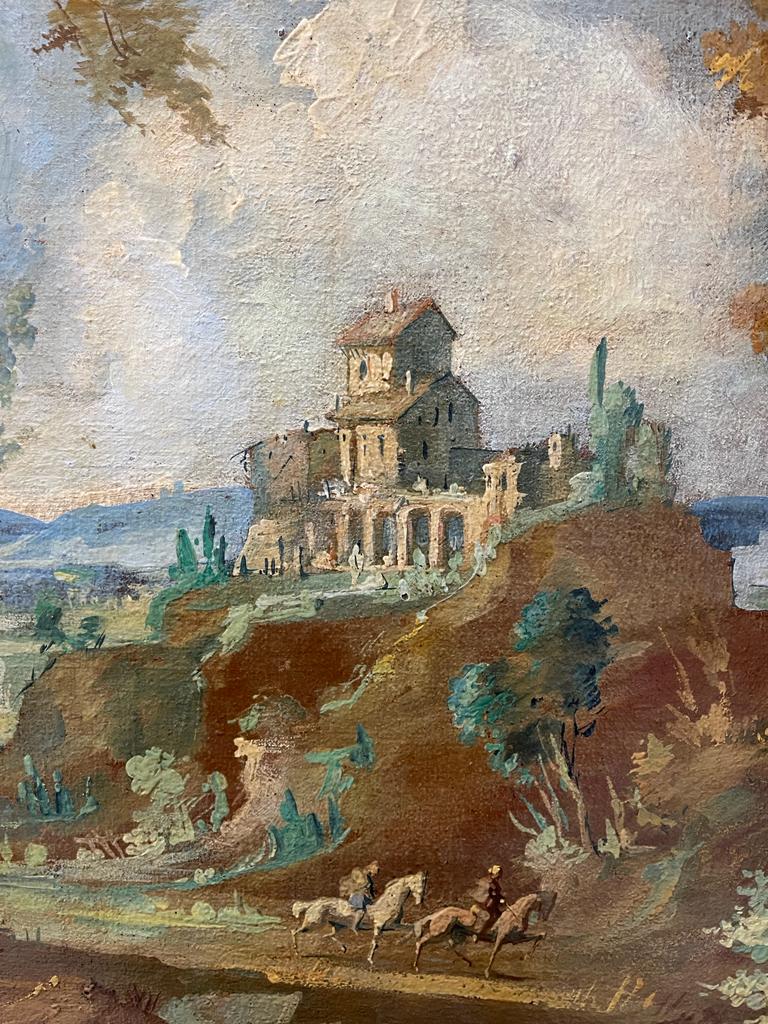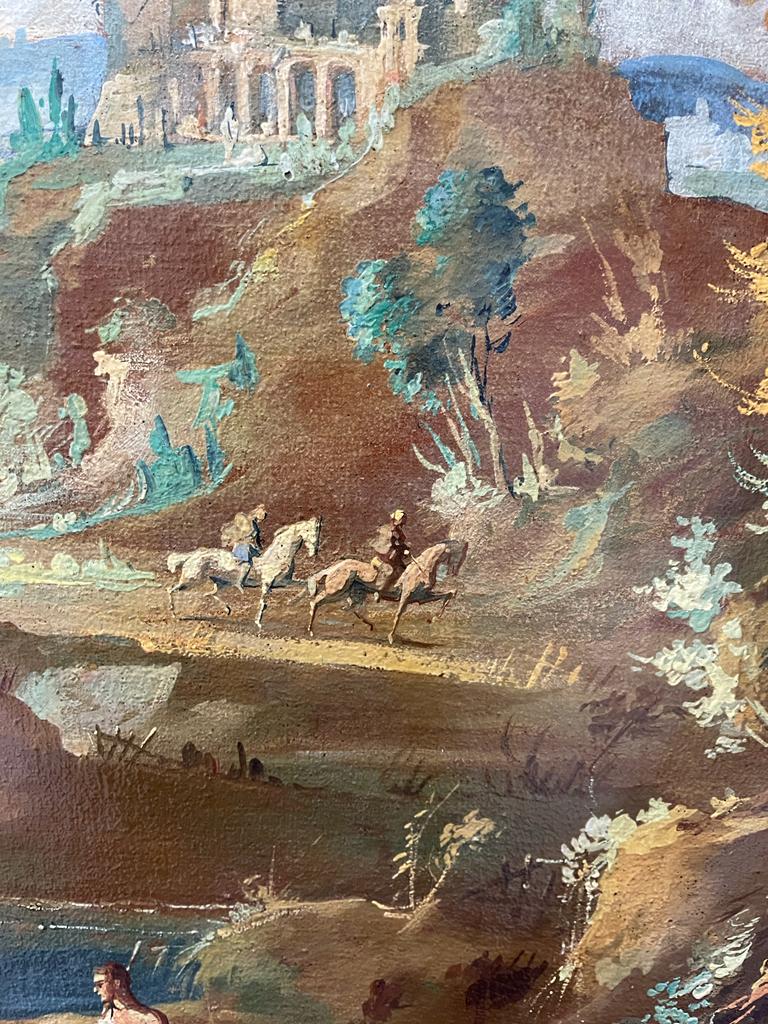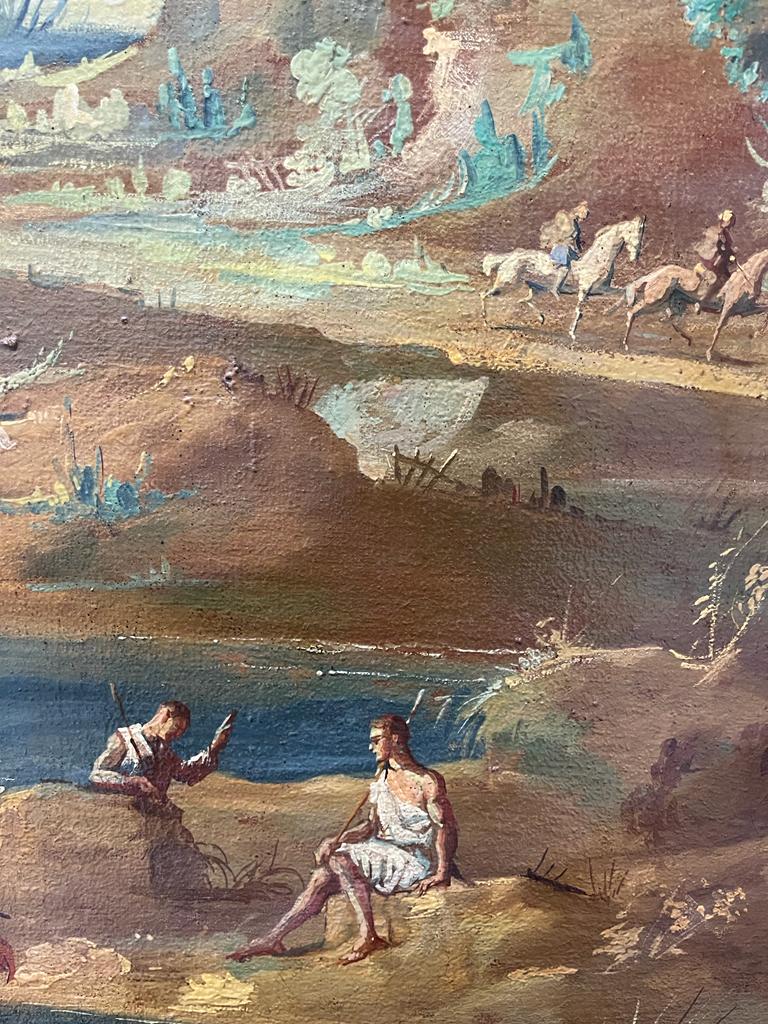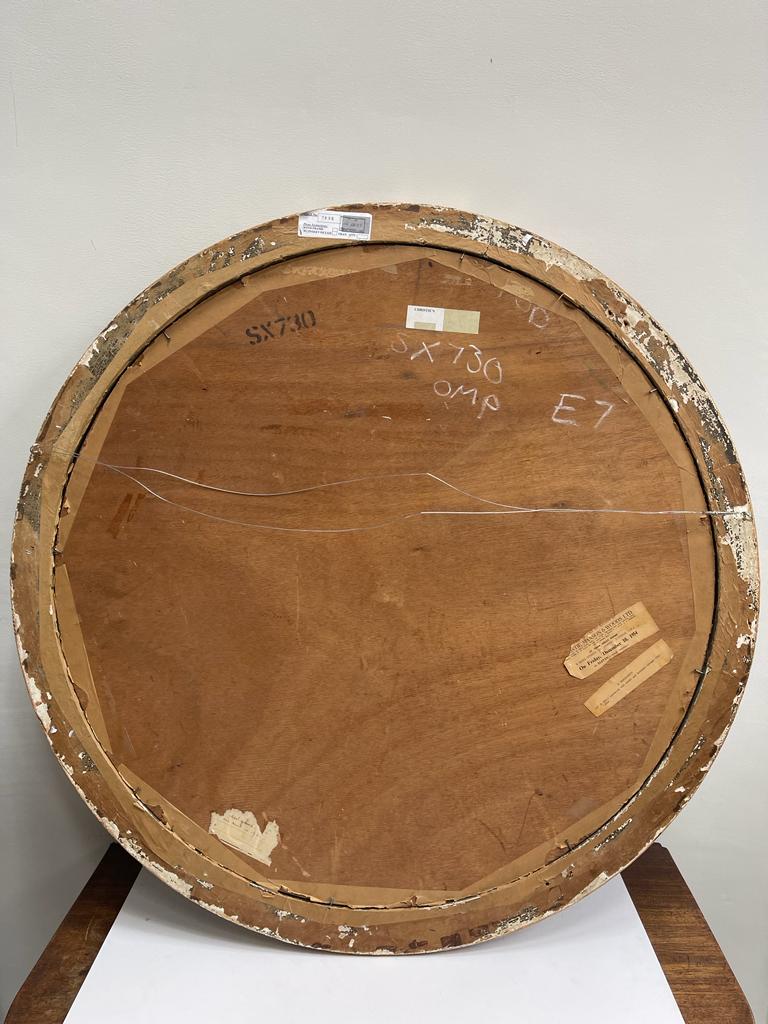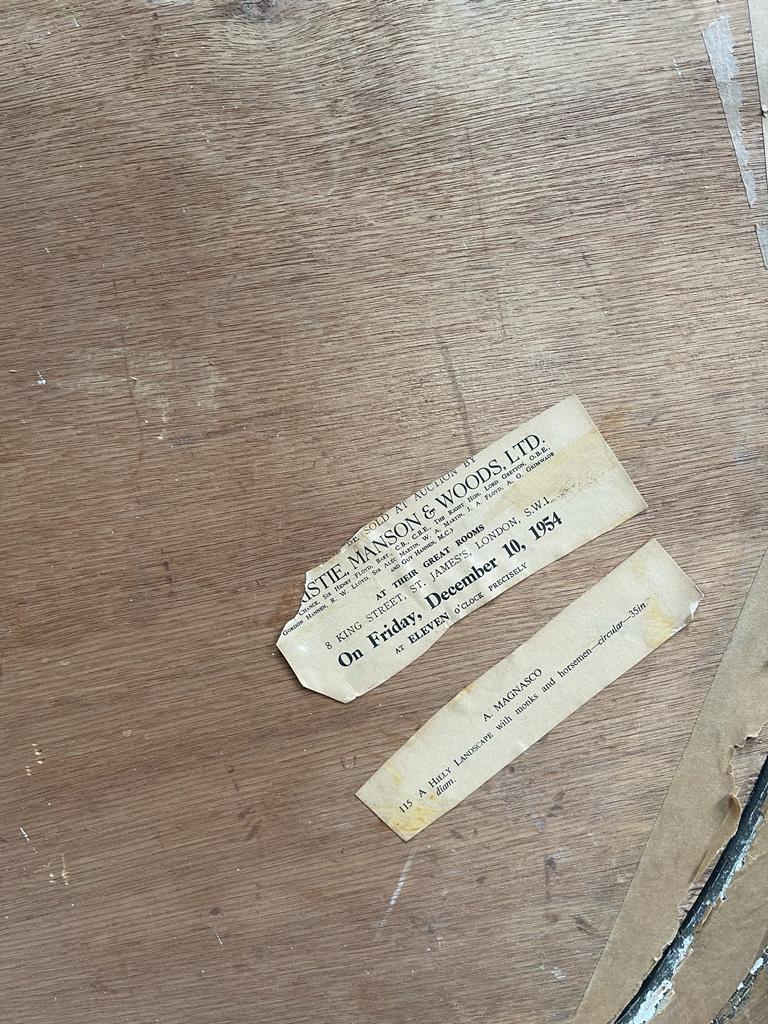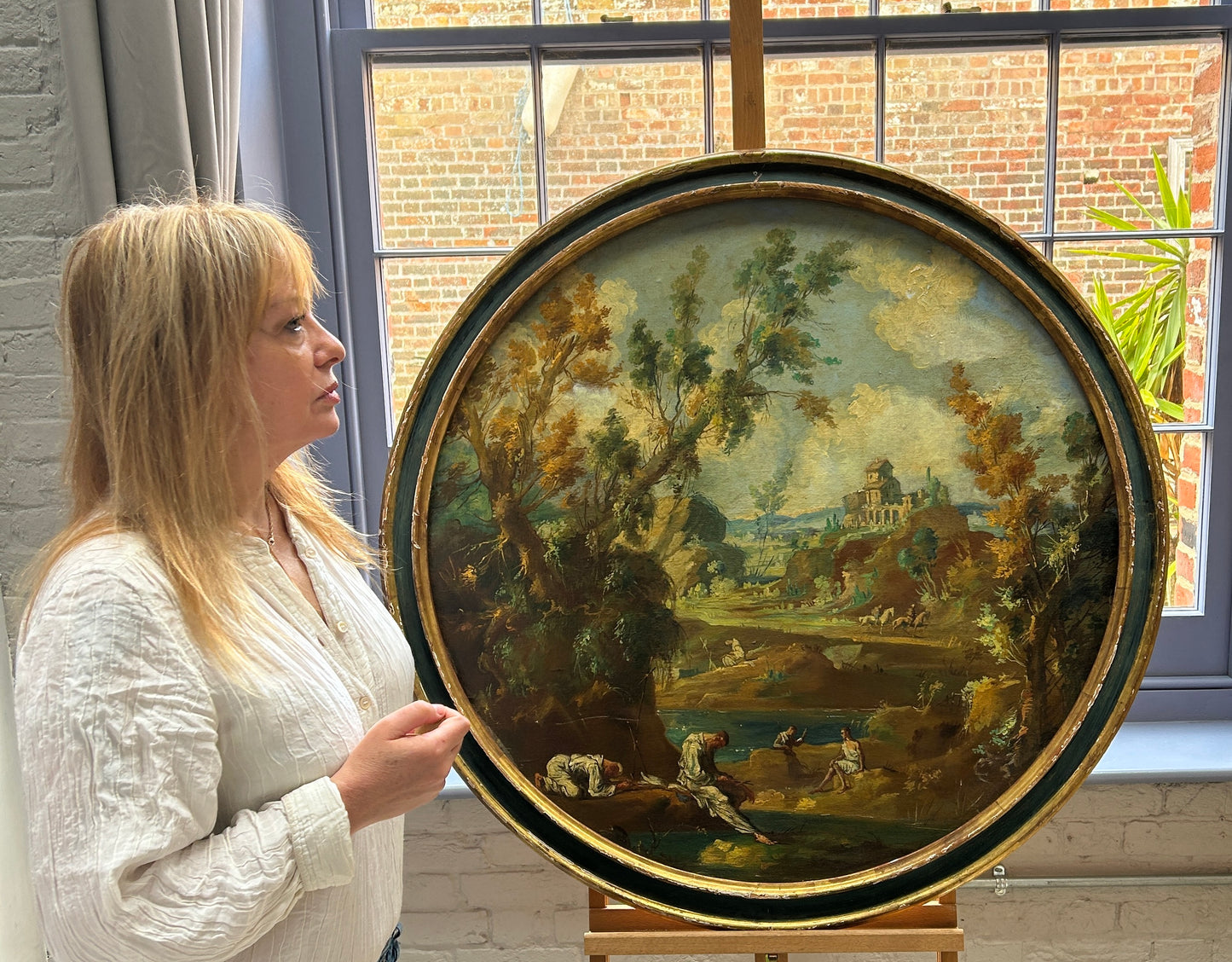Alessandro Magnasco 1667 - 1749 Large (1 metre wide) Oil on Canvas Italian Landscape.
Couldn't load pickup availability
Alessandro Magnasco 1667 - 1749 Large (1 metre wide) Oil on Canvas Italian landscape.
Title – Figures in a Landscape Late 17th/early18th
Artist – (Follower of) Alessandro Magnasco 1667 - 1749
Medium – Oil on Canvas laid on board
Size - 90cm diameter
Super quality late 17th/early 18th century oil on canvas by a follower of Alessandro Magnasco. We have catalogued this painting as a follower of Magnasco but it has all of the hallmarks of Magnasco’s work and the painting has provenance to a Christie’s sale in 1953 (Friday December 10th 1954, Lot 115, A hilly Landscape with Monks and Horsemen. A Magnasco) the original label for this sale is still present on the reverse as is a later sticker for a Christies sale No 7855 (Oct 2012)
The painting is housed in a carved but a little bruised painted frame, the painting is in good condition with only a couple of minor scratches.
Alessandro Magnasco 1667 – 1749), also known as il Lissandrino, was an Italian late-Baroque painter active mostly in Milan and Genoa. He is best known for stylized, fantastic, often phantasmagoric genre or landscape scenes. Magnasco's distinctive style is characterized by fragmented forms rendered with swift brushstrokes and darting flashes of light.
After 1710, Magnasco excelled in producing small, hypochromatic canvases with eerie and gloomy landscapes and ruins, or crowded interiors peopled with small, often lambent and cartoonishly elongated characters. The people in his paintings were often nearly liquefacted beggars dressed in tatters, rendered in flickering, nervous brushstrokes. Often, they deal with unusual subjects such as synagogue services, Quaker meetings, robbers' gatherings, catastrophes, and interrogations by the Inquisition.
A century later he would be described as a "romantic painter: who painted with candid touches, and ingenious expressiveness, little figures in Gothic churches; or in solitude, hermits and monks; or scoundrels assembled in town squares; soldiers in barracks". The art historian and critic Luigi Lanzi described him as the Cerquozzi of his school; thereby signaling him into the circle of followers of the Bamboccianti. He indicates that Magnasco had "figures scarcely more than a span large ... painted with humor and delight", but not as if this effect had been the intention of the paintermystic, ecstatic, grotesque, and out of touch with the triumphal course of the Venetian school"

